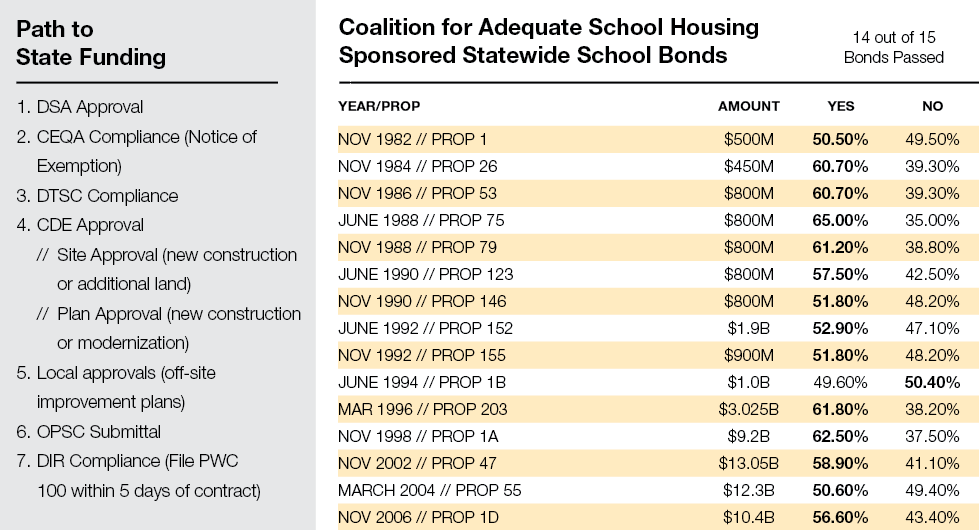By Dr. Don Ulrich, Assistant Superintendent, Facility Services, Clovis Unified School District and Julie Strauss, HMC Architects/School Advisors
With a $9 billion K-14 state bond measure on the horizon, districts should be proactive in their construction planning for the start of a new state bond program. All necessary signatures have been gathered and validated, and the initiative is qualified for the ballot. The proposed K-14 bond has the following program allocations:
// $3 billion K-12 new construction
// $3 billion K-12 modernization
// $2 billion community college
// $500 million charter schools
// $500 million Career Technical Education (CTE)
While the State School Facility Program (SFP) has been out of money for years, school districts across the state have continued to go through the entitlement process and secure a place in line for state funding when funding is made available. Approximately $1 billion in new construction applications and $600 million in modernization applications have already been submitted to the Office of Public School Construction (OPSC)—and the list grows monthly.
When submitting for state funding, it’s crucial to double check the details required to qualify for state funding because there is no review when an application is submitted. It could be two years before you find out you missed a detail and possibly the chance for funding. For example, you’ll want to ensure you file your PCW 100 in the correct time frame and confirm that contract, board approval, and Division of the State Architect (DSA) approval dates coincide correctly.
It is also helpful for districts to determine a 5- to 10-year prediction for state funding that denotes when each of your schools qualifies for state funding and for how much. This will determine when a local bond would be needed for state matching funds.
For those districts that are planning on state bond funds to leverage local dollars, it is imperative that districts factor in the additional time that will be needed to obtain those funds. With the reductions in staff at the state level, it’s anticipated that it will take the state 8-12 months to start a new program and for funds to start to flow.
Look into the legality of transferring available internal funds to start construction once the state bond measure passes. With the large time frame expected before money is dispersed, waiting until the money is available will cost districts due to cost escalation. If you can fund the projects sooner than later and then reimburse the internal fund, it will save money overall.
For more information contact Julie Strauss.

